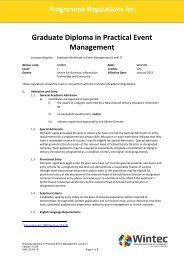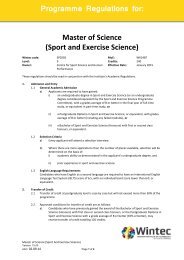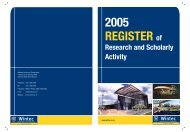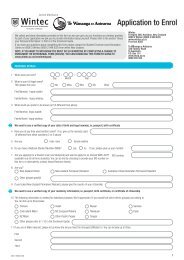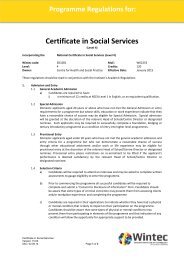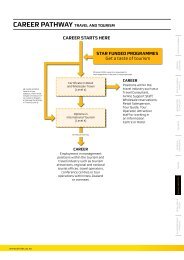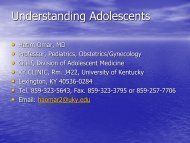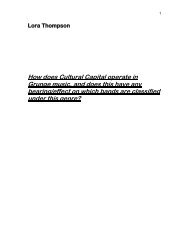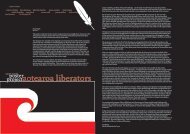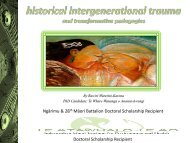Nursing Handover Research Project - Wintec Research Archive
Nursing Handover Research Project - Wintec Research Archive
Nursing Handover Research Project - Wintec Research Archive
You also want an ePaper? Increase the reach of your titles
YUMPU automatically turns print PDFs into web optimized ePapers that Google loves.
Following these studies was an article by Wiltshire and Parker (1996) which discussed<br />
handover as a site of containment in relation to anxiety in nursing practice which I included.<br />
In addition it seemed vital to include subsequent work an edited book of collective writings<br />
on nursing in which Parker (2004) had co authored two chapters on handover.<br />
These texts were then read in their entirety and then re read analysing the different discursive<br />
constructions of nursing handover, using the first three steps of Gee’s (2005) framework;<br />
significance, activities and identities to question how handover is constructed and to explore<br />
what is gained by such a construction.<br />
Identifying the constructs within nursing handover discourse<br />
Significance<br />
Step one- Significance. How is the writing about nursing handover being used to make<br />
certain things significant or not and in what way? (Gee, 2005).<br />
“Clinical handover is a high risk scenario for patient safety with dangers of discontinuity of<br />
care, adverse events and legal claims of malpractice” (Wong, Yee & Turner, 2008, p. 3). The<br />
three main discursive constructions within the texts are patient safety, sentinel events and<br />
professional/legal discourse. These constructs have blurred boundaries and are very much<br />
inter-related. The language used in the texts evokes fear into nurses at many levels, in an<br />
effort to seek change to practice. Nurses are constantly bombarded with new ideas and<br />
concepts and are expected to be flexible in amongst constant change. With increasing patient<br />
hospitalizations, higher acuity patients, decreasing length of stays, changing workforce<br />
dynamics the global reality is nurses have more pressure put on them (Anthony & Preuss,<br />
2002).<br />
Patient safety<br />
“Effective communication at clinical handover is important for improving patient safety and<br />
reducing adverse outcomes” (Porteous, Stewart-Wynne, Connolly & Crommelin, 2009)<br />
The texts construct patient safety as significant to handover. The patient safety construct is<br />
utilised in many of the texts emphasizing the need to implement a standardised approach to<br />
nursing handover (ACSQH, 2009; Alvarado et al., 2006; Caruso, 2007; HDC, 2007a;<br />
14



